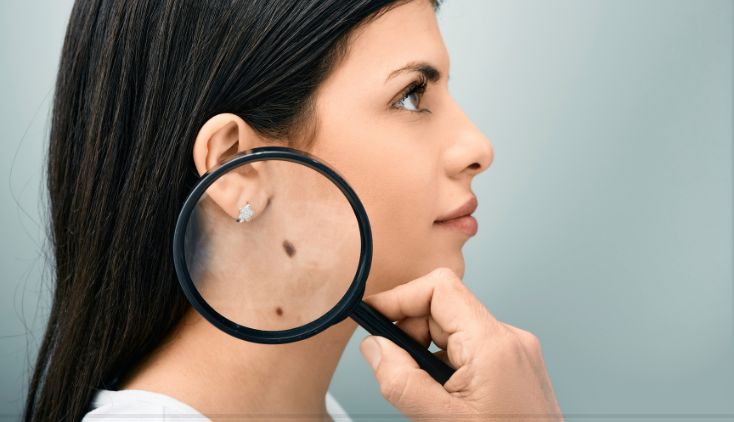What Your Body Might Be Telling You
Skin cancer happens when some cells in your skin start to grow uncontrollably. Catching it early is key to getting the best treatment. A great option includes Erivedge (vemurafenib), a medication used to treat Advanced Basal Cell Carcinoma. It works by targeting and blocking the activity of a specific protein that helps cancer cells grow.
Signs of Skin Cancer
Changes in Moles
Moles are usually small, brown spots on your skin. If you notice any of these changes, it could be a sign of skin cancer:
- Color: The color might change from brown to black, red or even blue.
- Size: It might get bigger over time.
- Shape: The edges might become uneven or jagged.
New Growths
Watch for new lumps or bumps on your skin. These could be:
- Small and firm: New growths that are hard to the touch.
- Color: They could be red, pink, black or brown.
Itchy or Bleeding Spots
If a spot on your skin:
- Itches or hurts: The area might be uncomfortable or sore.
- Bleeds: It might bleed or ooze, which is not normal for most skin spots.
Sores That Don’t Heal
Sores that don’t go away or keep coming back might be a problem. They might:
- Look like ulcers: They might have a crusty or open appearance.
- Last a long time: They might stick around for weeks or longer without healing.
Red or Irritated Skin
Skin cancer can cause:
- Red patches: These areas might look inflamed or irritated.
- Swelling: The skin around the area might puff up or feel tender.
Changes in Existing Skin Spots
Even if you’ve had a spot or mole for a while, changes can be a warning. Look for:
- Darkening: Existing spots might become darker.
- Texture: They might feel rougher or bumpier than before.
Treatments for Skin Cancer
Surgery
The most common treatment is surgery. Doctors:
- Cut out the cancer: They remove the cancerous part of your skin along with a small area of healthy skin around it to ensure all cancer cells are gone.
- Different methods: They might use different techniques, like excision (cutting out the cancer) or Mohs surgery (removing cancer layer by layer).
Radiation Therapy
This uses high-energy rays to:
- Kill cancer cells: It targets the cancerous area to destroy the cells.
- Non-surgical option: It’s used if surgery isn’t an option or for cancers in hard-to-reach places.
Chemotherapy
This treatment uses special medicines to:
- Kill cancer cells: The medicines can be applied to the skin or taken by mouth.
- Treat advanced cancer: It’s used when cancer has spread beyond the skin.
Topical Treatments
These are creams or ointments applied directly to the skin:
- Direct application: They help treat cancer cells on the skin's surface.
- Specific medications: These creams contain medications that target cancer cells directly.
Immunotherapy
This treatment helps your immune system:
- Fight cancer: It boosts your body’s natural defense to recognize and destroy cancer cells.
- For advanced cases: It’s often used for more serious or spreading cancers.
Erivedge
Erivedge (vemurafenib) is a medication used to treat a type of skin cancer called melanoma. Specifically, it's used for melanoma that has a BRAF V600E mutation, which is a genetic change found in some melanoma cells. Erivedge works by targeting and blocking the activity of a specific protein that helps cancer cells grow. This can help slow down or stop the growth of the cancer.
Skin Signals
If you notice any of these signs or changes on your skin, seeing a doctor as soon as possible is important. Early detection and treatment can make a big difference in staying healthy.
